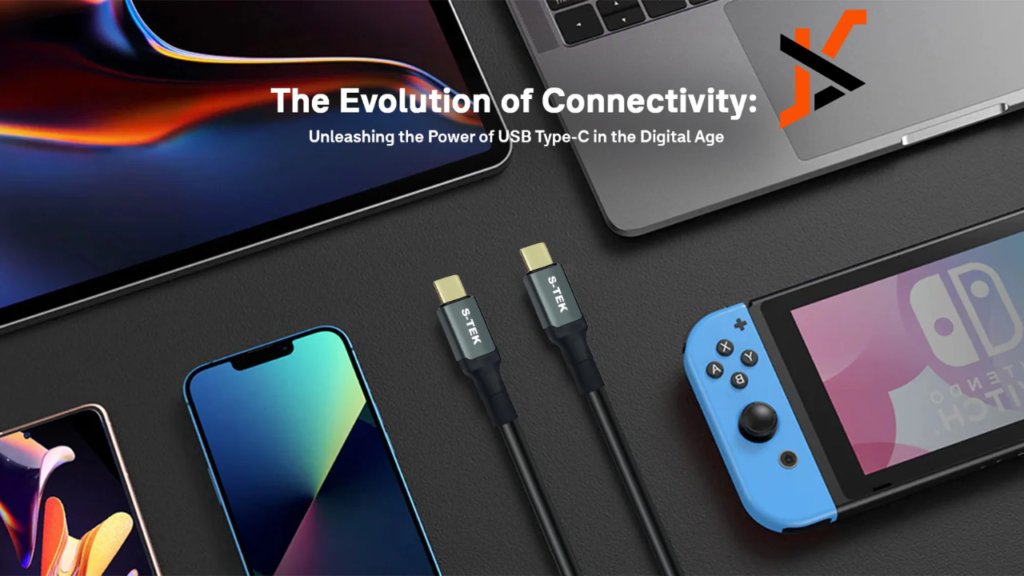The march of technology has perennially ushered in new standards revolutionising the way we interact with our devices. In the realm of data transfer and power delivery, one connector has taken centre stage: the USB-C. From smartphones to laptops, and a multitude of peripherals in between, the USB-C interface is the harbinger of a future where connectivity becomes seamless, fast, and incredibly versatile.
The Advent of USB-C
The advent of the USB-C standard marked a significant milestone in connectivity. Its introduction was a response to the growing demand for a universal connector that would simplify the user experience across various devices. Despite the proliferation of different types of connectors over the years, the need for a single, comprehensive solution became increasingly apparent.
USB-C, formally known as USB Type-C, is the answer to that demand. Unlike its predecessors, USB-C offers a reversible connector, meaning there’s no wrong way to plug it in. Alongside convenience, the design significantly reduces wear and tear both on the cables and the ports of devices, extending their service life.
High-Speed Data Transfer and Powerful Charging
A key benefit of the USB-C cable is its ability to support high-speed data transfer. With compatibility for USB 3.1 and beyond, data can be moved at astounding speeds, making the transfer of large files and streaming of high-definition content a breeze. The swift and efficient transfer of data is crucial in today’s fast-paced digital environment where time is often of the essence.
In conjunction with data prowess, USB-C also excels in delivering power. It supports the USB Power Delivery specification, enabling higher levels of power to be carried through the cable. This capacity ensures rapid charging of devices, so whether it’s a smartphone, tablet, or other USB-C compatible devices, downtimes are significantly reduced.
The Onward March to Standardisation
The move towards a standardised port across devices is not just a matter of convenience, but also of environmental consciousness. With electronic waste being a growing concern, the ability to use a single type of cable for a multitude of devices means fewer cables produced and disposed of, leading to less waste.
The computer industry is embracing USB-C with major manufacturers, including it as the main I/O interface. Some are even stripping away other ports, further hinting at a future where USB-C may stand as the sole connector for both data and power. The versatility of USB-C simplifies connectivity and with the added capability of transmitting video signals, the same cable that charges a device can also connect it to a display.
Backing up the physical standardisation is the growing support in software and protocols that pair with USB-C. Thunderbolt 3, now synonymous with USB-C, offers even more speed and flexibility, including the ability to daisy-chain multiple devices through a single connection, representing a leap forward in connectivity options.
The Future Is Mobile
The rise of mobile technology has augmented the importance of the USB-C interface. Smartphones are becoming the centrepiece of our digital lives, functioning as cameras, wallets, and gateways to the world’s information. Many manufacturers have recognised this, equipping their mobile devices with USB-C ports to facilitate fast charging and data transfer while on the move.
Adaptability and Ecosystem Expansion
USB-C’s adaptability has allowed for a burgeoning ecosystem of peripherals and accessories. Docking stations, external drives, and other devices are increasingly streamlining their connections through the USB-C port. This growing ecosystem underscores USB-C’s role as a connective hub for the modern workspace, where flexibility and efficiency are paramount.
One of the standout features of USB-C is its compatibility with alternate modes. These modes include the capacity to channel DisplayPort, HDMI, and MHL signals, enabling the cable to carry audio and video alongside data and power. Such convergence in a single cable simplifies setup and reduces clutter, facilitating an orderly and productive work environment.
As the Internet of Things (IoT) expands, USB-C is positioned to become an even more indispensable tool. The compatibility of USB-C with a wide array of devices means that it can form the basis of a connected home or office, tying together a network of smart devices for streamlined control and data sharing.
Conclusion
It is evident that the versatility, power, and convenience offered by USB-C cement its status as an essential component of today’s technology landscape. The push for a standardised, all-encompassing connector will continue to drive innovation within the tech industry, making USB-C the cornerstone of future developments in connectivity.
In conclusion, the USB-C cable is not merely a means of plugging in a device or transferring data. It is the symbol of a future where connectivity is ubiquitous, effortless, and integrated into every facet of our digital experiences. Professionals, technophiles, and casual users alike will find in USB-C an indispensable ally in navigating the complex web of modern technology.
As we forge ahead into a world where efficiency and minimalism are valued above all, it will be the simple, yet profoundly capable USB-C cable that will light the way towards a more connected future. For anyone looking to remain at the cutting edge of technology, a robust and reliable USB-C cable is, without a doubt, an ultimate tech companion.

